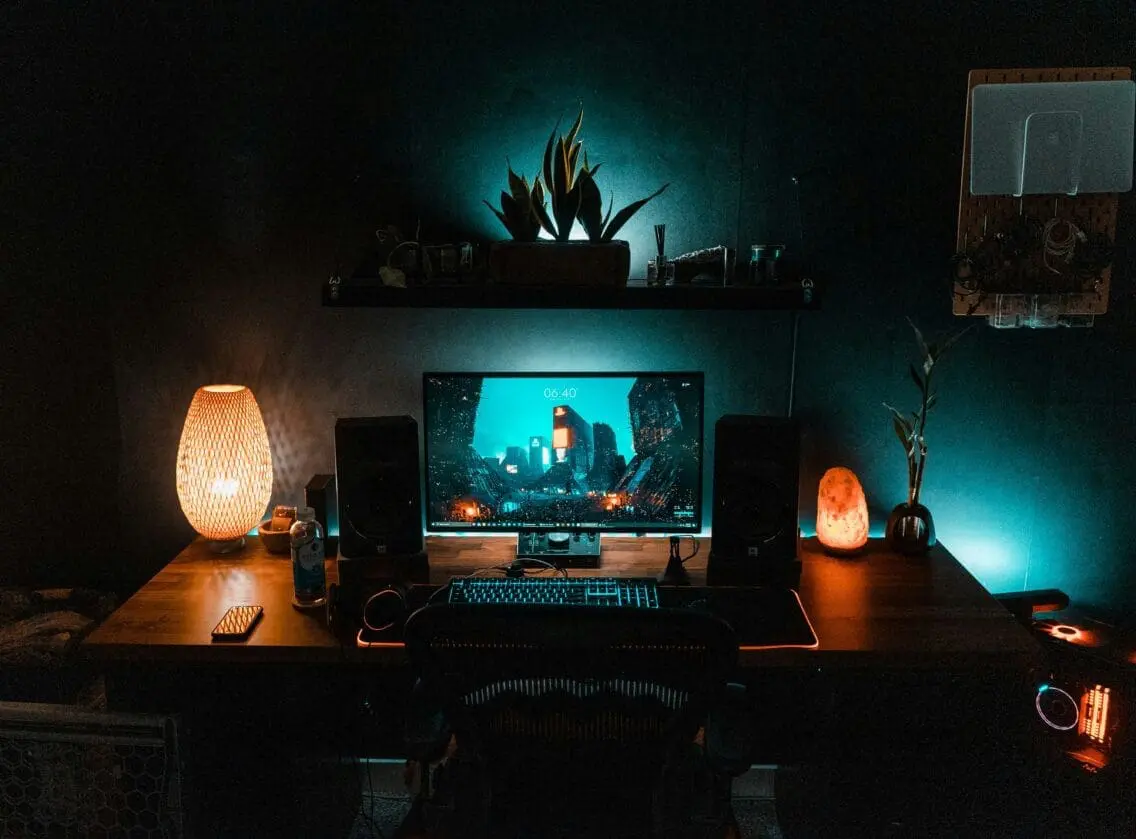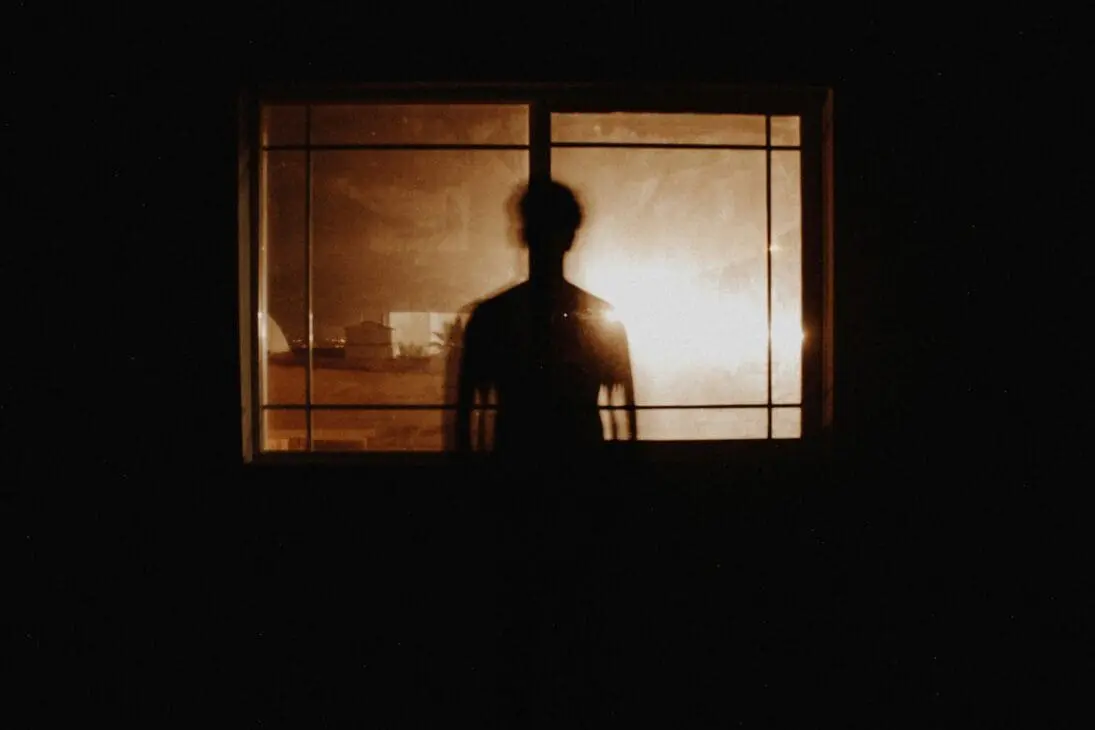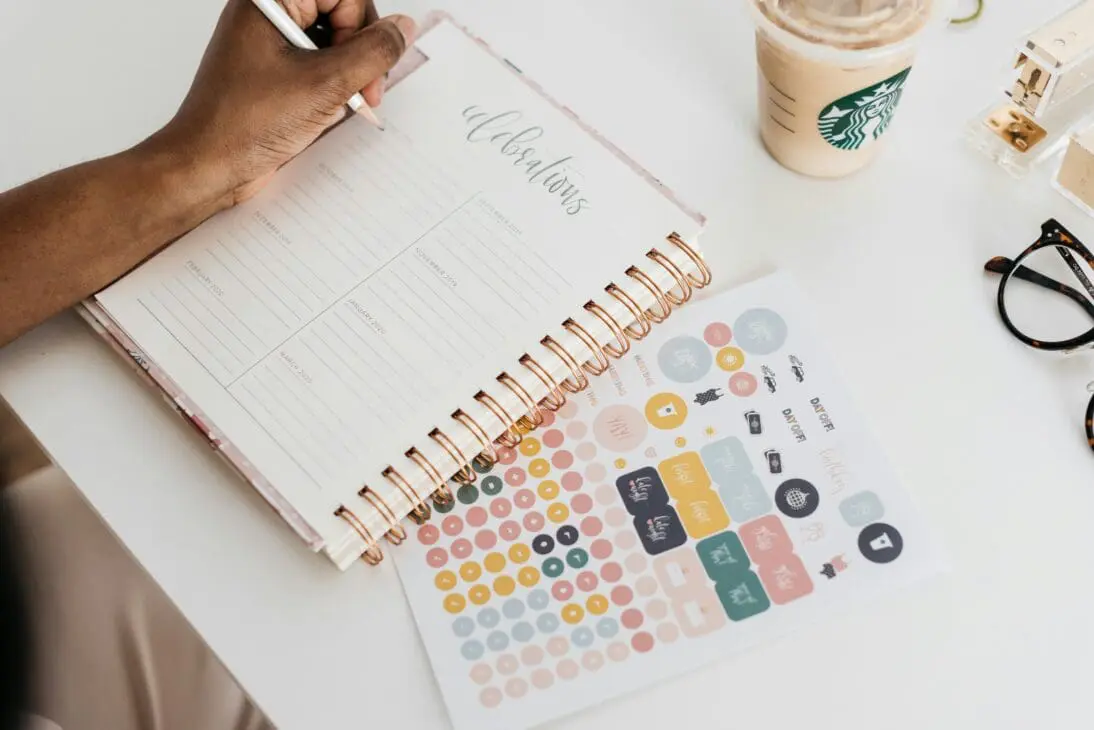Faceless Blogging and Healing Through Anxiety

Is Faceless Blogging Right for You? A Look at Healing and Hiding
Is faceless blogging right for you? For many of us navigating mental health recovery, the answer is yes.
Faceless blogging isn’t just a trendy content strategy—it’s a deeply personal decision. Some creators turn to faceless blogging to protect their peace. Others see it as the only path forward when anxiety makes showing up feel unsafe. As for me, it became both a boundary and a lifeline. And if you’ve ever felt that visibility costs your peace, this conversation might be for you.
When I first launched my blog, I pictured myself engaging confidently—posting selfies, sharing behind-the-scenes stories, maybe even hopping on live sessions. But I quickly realized that while blogging is text-based, building an online presence these days often comes with the pressure to be visually present too—especially on platforms like Instagram and TikTok.
And that was too much for me. I wasn’t ready to perform. I wasn’t ready to be perceived. So I chose to hide—and in that hiding, I found space to heal.

What Is Faceless Blogging—and Why Are More Creators Choosing It?
At its core, faceless blogging means building a brand, message, or business without tying your face or real-life identity to it. For some, it’s about anonymity. For others, it’s about creative boundaries and emotional safety.
It’s not about being dishonest—it’s about self-preservation. For many, it’s a boundary born from healing—a way to protect fragile confidence while still creating.
Faceless creators might:
- Use a pen name or brand name instead of their real one
- Avoid sharing photos or videos of themselves
- Refrain from livestreams or face-to-camera reels
- Limit personal information or backstories
Why faceless blogging makes sense in today’s world:
- It reduces pressure to maintain appearances or constantly be “on.”
- It supports healing, especially for those recovering from trauma or burnout.
- It protects privacy, especially in an age where oversharing is the norm.
- It enables consistency without emotional overexertion.
- It helps people blog through anxiety without putting themselves at emotional risk.
In short, it’s a sustainable way to create without compromising mental health.
Faceless Bloggers Who Are Quietly Winning
You don’t have to look far to find creators who’ve built thriving platforms while keeping their identities private. Here are a few who prove that you don’t need to show your face to make an impact:
- @herfirst100k (Tori Dunlap’s faceless phase) – Before revealing her identity, Tori built traction for her finance brand through voice and written storytelling, showing how strong messaging can build credibility long before personal branding does.
- Captain Sinbad (YouTube) – Uses symbolism, voiceovers, and cinematic storytelling instead of visuals of himself, reminding us that narrative and tone can replace self-image as a brand driver.
- The Artidote (Instagram) – A faceless platform focused on mental health, art, and human connection, proving that curation and emotional honesty can foster a global community without showing a single face.
- Lazy Masquerade (YouTube) – Built entirely through narration and atmosphere, his work illustrates how trust and intrigue can come from consistency and craft, not visibility.
- The Minimalists (early blog phase) – Their faceless beginnings centered on ideas and essays over identity, showing how message clarity and purpose can carry a brand before its creators ever appear in public.
These creators succeeded by building trust through tone, storytelling, and value—not visibility. Each one is proof that you can stay true, stay private, and still succeed.

Blogging With Anxiety: When Even Hitting “Publish” Feels Impossible
If you’ve ever stared at your draft folder and thought, “Why am I even doing this?”, then you know what blogging with anxiety feels like. For those of us dealing with overthinking, panic spirals, or social fears, the act of hitting “publish” can feel as intimidating as stepping on a stage.
Here’s what blogging with anxiety has looked like in my experience:
- Rewriting the same sentence five different ways because “what if someone takes it the wrong way?”
- Publishing and then deleting out of sheer panic.
- Feeling sick over comments—even the kind ones—because they mean you’ve been seen.
- Doubting your own expertise, even when you know your stuff.
- Being paralyzed by performance pressure, not because you’re unqualified, but because your nervous system thinks the internet is a threat.
And yet, I kept writing. Because behind the fear was something more powerful: purpose.
Faceless blogging gave me a way to be visible to myself first.l: purpose. Faceless blogging gave me the space to work through anxiety while still showing up for my readers.
The Healing Side of Faceless Blogging
Faceless blogging didn’t just change how I showed up online—it reshaped how I healed offline. What started as a way to avoid anxiety-inducing visibility slowly became a safe space where I could reconnect with myself.
Without the pressure to be seen or perform, I began to untangle old fears, find my voice, and rebuild trust in my own story. This quiet form of expression gave me more than just creative freedom—it gave me room to breathe, reflect, and grow.
I was able to speak more authentically.
Without a visual audience, I didn’t worry about how I looked. I just wrote. The screen created a buffer between my truth and the world’s reactions. That allowed honesty to flow freely.
I learned to control the narrative.
Sharing my story slowly, on my terms, helped me stay in charge of my own healing. I didn’t have to relive trauma in public—I could choose when and how to open up.
I protected my nervous system.
Avoiding overstimulation from livestreams or visual content meant I could stay emotionally regulated. The blog became a sanctuary—not a spotlight.
But with every layer of healing came another lesson: protection and isolation often walk hand in hand.
Faceless Blogging Challenges No One Talks About
While faceless blogging has been a lifeline for my mental health, it’s not without its emotional trade-offs. What protects you can also isolate you. The same boundaries that keep you grounded can sometimes leave you feeling disconnected.
It’s a quiet, often overlooked tension—between the need for peace and the human desire to be seen, known, and understood. Behind the safety of the screen, there are still moments of doubt, loneliness, and longing for connection that anonymity can’t always protect you from.
While faceless blogging offers safety, it also reveals new emotional terrain—loneliness, self-doubt, and the longing to be seen.
Here are some of the hidden struggles I’ve come to know intimately:
The Invisible Identity Crisis
When your readers engage with your content but don’t truly know who you are, it creates a strange sense of detachment. You might be getting page views, comments, even compliments—but it still feels like they’re directed at your work, not at you.
Over time, that disconnect can lead to feelings of invisibility or detachment.
Do I exist here beyond the words I share?
For those of us with anxiety, dissociation, or a history of emotional neglect, this can trigger old wounds. You’re seen but not fully witnessed, and that can quietly chip away at your confidence.
Amplified Impostor Syndrome
Impostor syndrome is common among creators—but it can be especially loud when you’re faceless. Without external validation through photos, interviews, or public recognition, it’s easy to spiral into self-doubt.
“Who am I to be writing this?”
“Why would anyone trust me if they don’t even know what I look like?”
When you’re already prone to overthinking or perfectionism, the faceless aspect can magnify that inner critic.
And for those with trauma or people-pleasing tendencies, the lack of visual affirmation can create a loop of constantly second-guessing yourself, your voice, and your worth.
Creative Isolation
Creating from behind the screen often means opting out of in-person events, podcast interviews, networking opportunities, and even friendly video chats. That means fewer collaborations, less exposure, and a limited sense of community.
But the deeper toll? The emotional one.
You don’t just miss out on opportunities—you miss out on belonging. When you’re healing from trauma or chronic anxiety, isolation can trigger depressive patterns or heighten feelings of abandonment.
Even when you love your solitude, too much of it—especially when it’s rooted in fear—can feel heavy.
The Emotional Toll of Constant Boundaries
Boundaries are healthy, but maintaining them all the time takes emotional labor—especially when they stem from survival needs rather than preference.
Some days, choosing to stay faceless feels like reclaiming control.
Other days, it feels like self-erasure.
There are moments when I’ve wanted to be more open—to show a bit more of my life, to connect visually with readers who care—but the fear kicks in:
Will I regret it? Will I be safe?
That push-pull between the desire for connection and the need for self-protection is exhausting. It’s a quiet weight that follows you—even as you create beautiful, meaningful things.
Faceless blogging is full of contradictions. It gave me room to breathe, but also made me question my place in the room. It allowed me to heal, but sometimes reopened wounds I didn’t know I was carrying.
Still, I’ve learned to weigh every challenge against this truth: peace is more valuable than popularity.
And if being seen comes at the cost of my mental health, I’ll choose safety—again and again.

How to Succeed With Faceless Blogging While Healing
Healing doesn’t mean hiding forever—it means finding a rhythm where creativity and safety can coexist. Faceless blogging isn’t about disappearing; it’s about redefining how you show up. Over time, I learned that sustainability in this space comes from gentle structure—systems, routines, and boundaries that protect your peace while keeping your creativity alive.
Creating a Safe Persona
Your face isn’t your only brand—your words are, too. I intentionally shaped a tone that feels warm, reflective, and real. Over time, that voice became my digital fingerprint. Even without visuals, readers began recognizing my presence through the way I wrote, the emotions I leaned into, and the stories I chose to tell.
Takeaway: A consistent tone and name—even a pen name—can build trust without sacrificing privacy.
Balancing Honesty and Boundaries
There’s a difference between being honest and being exposed. I learned to share the heart of my story without revealing every detail. Instead of listing diagnoses, I describe what anxiety feels like. Instead of naming workplaces, I write about burnout in broader terms. This balance protects both my healing and my readers’ emotional space.
Takeaway: You can be authentic without being fully open—emotional truth doesn’t require full transparency.
Developing a Writing Ritual
Writing with anxiety requires gentleness. My ritual grounds me: lighting a candle, playing soft music, and writing during quiet hours. I draft in a separate document before uploading to WordPress, and I don’t check stats right away. These habits reduce overthinking and prevent emotional spirals from performance pressure.
Takeaway: Gentle rituals transform writing from a trigger into a form of regulation.
Choosing Connection Over Performance
At first, I thought success meant virality. But faceless blogging shifted my focus—I began measuring impact by resonance, not reach. One thoughtful comment now means more to me than a hundred likes. I write to connect, not impress, and that makes the process lighter and more meaningful.
Takeaway: Connection sustains creativity longer than performance ever could.
Finding an Anonymous Community
Even while staying anonymous, I found safe ways to connect. Reddit threads for mental health writers, Substack circles, and private Telegram chats became havens where I could share wins and struggles. Knowing others were also healing behind the screen reminded me I wasn’t alone.
Takeaway: Community doesn’t require visibility—it just requires honesty.
None of this is about doing it perfectly. Healing and creating aren’t linear journeys—and they don’t need to be public to be valid. What matters most is showing up in a way that honors your nervous system, your story, and your truth.
If you’re blogging through anxiety or navigating your own healing, remember: your presence doesn’t have to be loud to be powerful. You can build something beautiful in the quiet.
Can You Grow a Business While Blogging With Anxiety? Yes.
Healing and ambition can coexist. Once I felt emotionally ready, I began exploring practical ways to grow—without losing my peace. Faceless blogging doesn’t limit your potential; it just invites you to build differently. You can absolutely create a meaningful, profitable brand while honoring your mental health and staying behind the screen. It all comes down to intention, creativity, and choosing platforms that work with you, not against you.
1. Creating Digital Products
I started with what I knew best: my healing journey and creative process. I turned journal prompts into printable guides, wrote short eBooks based on my blog entries, and built self-paced email courses—all without ever showing my face.
Tools like Canva made design simple, and Notion kept everything organized. These products allowed me to support my readers while maintaining strong emotional boundaries.
Takeaway: Your experience is valuable—turn what you’ve learned into tools that help others.
2. Leveraging SEO
Instead of chasing trends or algorithms, I focused on writing helpful, keyword-rich content that answered real questions. Long-tail phrases like “blogging with anxiety” or “faceless branding tips” helped my posts rank organically.
SEO gave me quite a visibility—steady traffic without the pressure of constant social engagement.
Takeaway: Let search engines amplify your words while you protect your energy.
3. Building a Loyal Email List
I chose connection over followers. By offering a freebie—like a set of printable journal prompts—I invited readers onto my email list. Each week, I send short, heartfelt messages that feel more like letters to a friend than marketing emails.
Over time, that authenticity built trust, led to coaching inquiries, and even created passive income through affiliate links.
Takeaway: An email list is your safe corner of the internet—intimate, personal, and entirely yours.
4. Using Low-Visibility Platforms
Not every platform requires you to perform. I focused on tools that thrive on substance over presence:
- Pinterest for traffic through helpful visual pins
- Medium for republishing blog posts with minimal effort
- Quora for sharing advice and linking back to my content
Each platform allowed growth without triggering anxiety.
Takeaway: Choose platforms that let your voice—not your image—lead.
5. Monetizing Through Affiliates
I only share what I genuinely use—mental wellness apps, calming playlists, writing tools. Rather than hard-selling, I weave affiliate links naturally into blog posts or newsletters. Readers trust honesty, and that trust turns into sustainable income.
Takeaway: Authenticity converts better than any marketing tactic.
Faceless, Not Voiceless: Final Thoughts on Healing Through Blogging
Faceless blogging has been one of the most quietly transformational choices of my creative life. It’s not for everyone—but for some of us, it’s the only way we can even begin.
If you’re blogging with anxiety, know this:
- You don’t have to be perfect.
- You don’t have to be visible.
- You just have to keep showing up—in the ways that feel safe, steady, and true.
Because sometimes, the quietest voices leave the deepest impact.
When I stopped trying to be seen, I started being heard.
And maybe that’s what healing really looks like.
FAQs
1. Can faceless blogging really build trust with an audience?
Absolutely. Trust isn’t built through visibility—it’s built through consistency, tone, and authenticity. Readers connect to honesty, not appearances. When your writing carries warmth, empathy, and reliability, your audience begins to trust your voice—face or no face.
2. What are the best platforms for anonymous creators?
Platforms like Medium, Substack, Pinterest, and WordPress work beautifully for faceless creators. They let your words and ideas take center stage, without demanding video content or personal exposure. If you prefer community-based spaces, Reddit and Quora are also great for connecting with others who value privacy.
3. How do you stay consistent with faceless content creation?
Create a gentle routine that supports your mental health. Set specific writing days, limit time on analytics, and focus on quality over visibility. Tools like Notion or Trello can help organize posts without overwhelming you. Most importantly, remember that consistency doesn’t mean constant output—it means showing up with care and intention.
4. What if I want to “unmask” later—how do I transition safely?
You can reveal yourself at your own pace. Start with small steps—maybe a personal photo on your newsletter, or a short video introduction for your readers. Before doing so, check in with your boundaries: Why now? What feels safe? You don’t owe anyone full visibility; choose what feels empowering, not pressured.
Your Story Matters—Even Behind the Screen
Are you a faceless blogger? Or are you thinking about starting one but feel anxious, uncertain, or afraid of being misunderstood?
Let’s open up a space for gentle, honest conversation.
Drop a comment, share your blog, or tell me—what’s holding you back from being visible?
And if you’re already creating softly but bravely, know this:
I see you. I’m with you.
This is your reminder—You don’t need to be seen to be heard.

